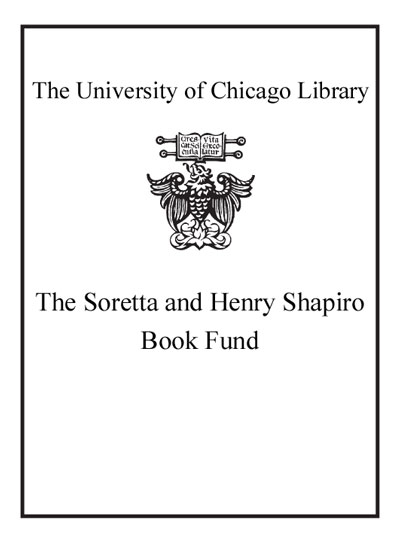Immunobiology of carbohydrates /
Saved in:
| Imprint: | Georgetown, Tex. : Landes Bioscience/Eurekah.com ; New York : Kluwer Academic/Plenum, c2003. |
|---|---|
| Description: | 315 p. : ill. ; 24 cm. |
| Language: | English |
| Series: | Molecular biology intelligence unit Molecular biology intelligence unit (Unnumbered) |
| Subject: | |
| Format: | E-Resource Print Book |
| URL for this record: | http://pi.lib.uchicago.edu/1001/cat/bib/5163842 |
Table of Contents:
- Preface
- 1.. Carbohydrate Blood Group Antigens and Tumor Antigens
- Abstract
- ABO(H) Blood Group Antigens
- I and i Antigens
- P Blood Group Antigens
- Lewis Blood Group Antigens
- Differentiation and Developmental Carbohydrate Determinants, Lewisx, Lewisy, Sialyl Lewisx and Related Antigens
- Heterophile Antigens
- 2.. Structural Basis for Mannose-Binding Protein Function in Innate Immunity
- Summary
- Introduction
- Structural Organization of MBP
- Gene Organization of MBP
- Sugar Recognition by MBP
- MBP/MASP Complexes
- Mechanism of Complement Activation by MBP
- MBP-Associated Immunodeficiency
- Complement Activation and Disease
- MBP and Opsonization
- MBP As a Therapeutic Agent
- 3.. C-Reactive Protein: Structure, Synthesis and Function
- Abstract
- Introduction
- History
- Synthesis
- Structure
- Ligand Binding
- Receptor Interactions
- CRP and the Complement System
- CRP and Infection
- CRP and Autoimmunity
- CRP and Cardiovascular Disease
- CRP and Inflammation
- CRP and Cytokine Production
- Summary
- 4.. Complement: A Major Humoral Effector System in Innate and Acquired Immunity
- Abstract
- Molecular Elements of the Innate Immune Response Involved in the Recognition of Pathogens and Toxic Cell Debris: A Common Ancestral Scavenging System
- The Complement System and Complement-Associated Proteins: Routes of Activation against Pathogens
- The C System and C-Associated Proteins: Clearance of Apoptotic Cells
- The Proposed C1q Receptor Involved in Phagocytosis and/or Signaling Events
- Other C1q and Defense Collagen Receptors (CR1, Cc1qr, CD91, Gc1qr)
- C Receptors Involved in Phagocytosis and Cell Recruitment (Chemotaxis)
- CR2(CD21): The Link Between Innate and Acquired Immune Responses
- The Opsonic Ancestral Element
- C and Other Innate Immune Signaling Pathways: An Ancestral Innate Immune Signaling Pathway
- Conclusion
- 5.. Carbohydrate Recognition Receptors on Antigen Presenting Cells
- Abstract
- Introduction
- The Macrophage Mannose Receptor Family
- Other Receptors with Mannose-Specificity
- NKCL/Dectin-2
- [beta]-Glucan Recognition by APCs
- Galactose Receptors
- L-Selectin (CD62L)
- Summary
- 6.. Toll-Like Receptor: Specificity and Signaling
- Abstract
- Introduction
- Toll-Like Receptor Family and Relatives
- TLR Signaling Pathway
- Essential Role of MyD88 in TLR/IL-1 Signaling
- TLR4-Specific Signaling Pathway
- Perspectives
- 7.. C-Type Lectin and Lectin-Like Receptors in the Immune System
- Abstract
- Introduction
- CTLDs in the Immune Response--Ligand Binding, Specificity and Function
- Group II of CTLD-Containing Proteins in the Immune System--Endocytic Type II Transmembrane Proteins
- Group III of CTLD-Containing Proteins in the Immune System--Pathogen Recognition
- Group IV of CTLD-Containing Proteins in the Immune System--Leukocyte Adhesion Events
- Group V CTLD-Containing Proteins in the Immune System--NKC Encoded Receptors
- Ly49 Receptor Family
- NKG2 Receptor Family
- CD69 and NKR-P1 Receptors
- Group VI CTLD-Containing Proteins in the Immune System--Phagocytosis and Antigen Uptake and Processing
- Conclusions
- 8.. The Sialic Acid-Binding Siglec Family
- Abstract
- Introduction to the Siglec Family
- CD22: An Example of a Siglec on B Cells with Inhibitory and Adhesion Functions
- Conclusions
- 9.. Antibody Responses to Polysaccharides
- Abstract
- Introduction
- B Cell Activation and Signaling Pathways Triggered by Polysaccharide Antigens
- The Three Main Sources of Antibodies
- MZ B Cells and Their Specialized Response to Polysaccharide Antigens
- Other TI Responses: Critical Costimulation by Toll-Like Receptors
- Conclusions
- 10.. CD1-Restricted T Cell Responses against Microbial Glycolipids
- Introduction
- CD1 Genes and the Evolution of the CD1 Family
- CD1 Protein Structure
- Cellular Expression and Tissue Distribution of CD1 Proteins
- T Cell Recognition of CD1 and CD1-Presented Antigens
- CD1-Presented Antigens
- Cellular and Molecular Mechanisms of Antigen Presentation by CD1
- Molecular Basis of Lipid Antigen Interactions with CD1 and TCRs
- Potential Role of CD1 in Microbial Immunity
- 11.. Processing and Presentation of Glycoproteins in the MHC Class I and II Antigen Presentation Pathways
- Abstract
- Introduction
- Where Does Glycosylation Occur?
- The MHC Class I Processing Pathway
- Outline of the Class I Processing Pathway
- How Does Glycosylation of the Protein Antigen Affect MHC Class I Processing?
- The MHC Class II Processing Pathway
- How Does Glycosylation Affect Class II Processing?
- Glycopeptides As T Cell Epitopes
- Naturally Processed Glycopeptide Epitopes
- Crystal Structures of MHC-Glycopeptide Complexes
- How Does the T Cell Receptor Interact with MHC-Glycopeptide Complexes?
- Glycosylation in Autoimmune and Anti-Tumor T Cell Responses
- Conclusions and Perspectives
- 12.. Chemical Synthesis of Bacterial Carbohydrates
- Introduction
- Synthesis of Bacterial Oligosaccharides
- 13.. Challenges and Opportunities in the Development of New Conjugate Vaccines against Infectious Diseases
- Abstract
- The Success of Vaccines Based on Glycoconjugates
- Conjugate Vaccines in Development
- New Directions
- Specific Challenges in the Development of Conjugate Vaccines
- Conclusions
- 14.. Carbohydrate-Based Targets and Vehicles for Cancer and Infectious Diseases Vaccines
- Abstract
- Bacterial Carbohydrates As Danger Signals
- Bacterial Carbohydrates As Human Vaccines
- Bacterial Carbohydrates As the Basis of Novel Vaccine Approaches
- Parasite Carbohydrates As Targets of Protective Immunity
- Parasite Carbohydrates As Immunomodulators
- Targeting the Mannose Receptor for Vaccine Development
- Targeting the Mannose Receptor for Drug Therapy
- Targeting the Mannose Receptor for Antigen Delivery
- Targeting the Scavenger Receptor for Vaccine Development
- Future Prospects
- 15.. The Interaction between Anti-Gal and the [alpha]-Gal Epitope As an Immunologic Barrier to Xenotransplantation
- Abstract
- Introduction
- Elimination of [alpha]-Gal Epitopes
- Prevention of Anti-Gal Response in Xenograft Recipients
- Index


